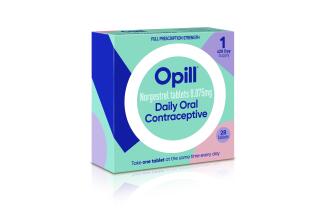New fit for U.S. birth control
- Share via
Women have a new contraceptive option in the FemCap, a silicone rubber device that fits snugly over the cervix and blocks the passage of sperm.
FemCap, which has been available in some European countries, is designed a bit differently from other barrier contraceptives that cover the cervix. With the cervical cap and diaphragm, spermicide gels or creams are applied inside the dome of the cap, which sits on the cervix. But FemCap is designed so that potentially irritating spermicides can be applied to a groove on the outside, with a smaller amount going inside the dome. It also features a brim that forms a seal against the vaginal walls to further protect against pregnancy.
Approved by the Food and Drug Administration with little fanfare last month, the developer only disclosed the U.S. approval this past week.
“We’re very glad the device got approved, and we think it’s an option for American women,” said Marianne Callahan, clinical director for CONRAD, a nonprofit organization in Arlington, Va., that studies contraceptives and HIV prevention for developing countries. Unlike the diaphragm, which some women find uncomfortable because of the way it’s wedged behind the pubic bone, FemCap sits on top of the cervix, Callahan said.
The device was developed by Dr. Alfred Shihata, a family doctor from Del Mar, Calif., who also has been working on a microbicide that could be used with the FemCap to protect women against HIV.
FemCap must be fitted by a health-care professional and requires a prescription. It’s available in three sizes, depending on how much a woman’s cervix has been enlarged by pregnancy: small for women who have never been pregnant, medium for women who have delivered surgically by Caesarean section and large for women who have delivered vaginally.
Unlike most barrier contraceptives, which must be removed within 24 hours, FemCap can be worn up to 48 hours and can be left in place through multiple acts of intercourse. It’s removed by pulling on a strap. Because it’s not made from latex, FemCap is appropriate for women who may be allergic to latex condoms.
FemCap was studied twice, but the first study looked at a version without a strap. That study of 800 women at 10 U.S. sites, conducted by CONRAD for the U.S. Agency for International Development, found FemCap less effective than a diaphragm, Callahan said. After six months of typical use, the pregnancy rate among women who used the FemCap was 13.5%, compared with 7.9% among diaphragm users. Over a year, FemCap users would be expected to have a 22.8% pregnancy rate, compared with 13.7% for diaphragm users.
However, the rate of pregnancy associated with FemCap falls in line with rates for other barrier contraceptives, said Dr. Christine Mauck, CONRAD’s senior medical advisor. The rate of pregnancy with the cervical cap and the Today sponge, which was recently approved in Canada and is awaiting FDA action in the U.S., is about 40% among women who have previously given birth and 20% among women who’ve never given birth. In contrast, oral contraceptives are more than 95% effective with typical use; more than 99% effective when used perfectly.
Some women who develop urinary tract infections with the diaphragm may prefer FemCap; its users had a 7.5% rate of these infections, compared with 11.9% among diaphragm users.
The second study, conducted in 1999 and 2000, looked at whether adding a strap to a redesigned FemCap eased insertion and removal and whether there were additional safety concerns and acceptability issues. Those results have been reviewed by the FDA but haven’t been published.
Lawrence Finer, assistant director of research for the non-profit Alan Guttmacher Institute in New York, welcomed the addition of FemCap, saying new contraceptives increase the likelihood that a couple will find an acceptable method of birth control. Even without more extensive studies of the redesigned FemCap, Finer said that simply having FDA approval “at least means doctors will consider adding it to the range of methods they will consider prescribing.”
FemCap could play a role for people who want to combine it with another barrier form of birth control, such as a condom, Finer said.






